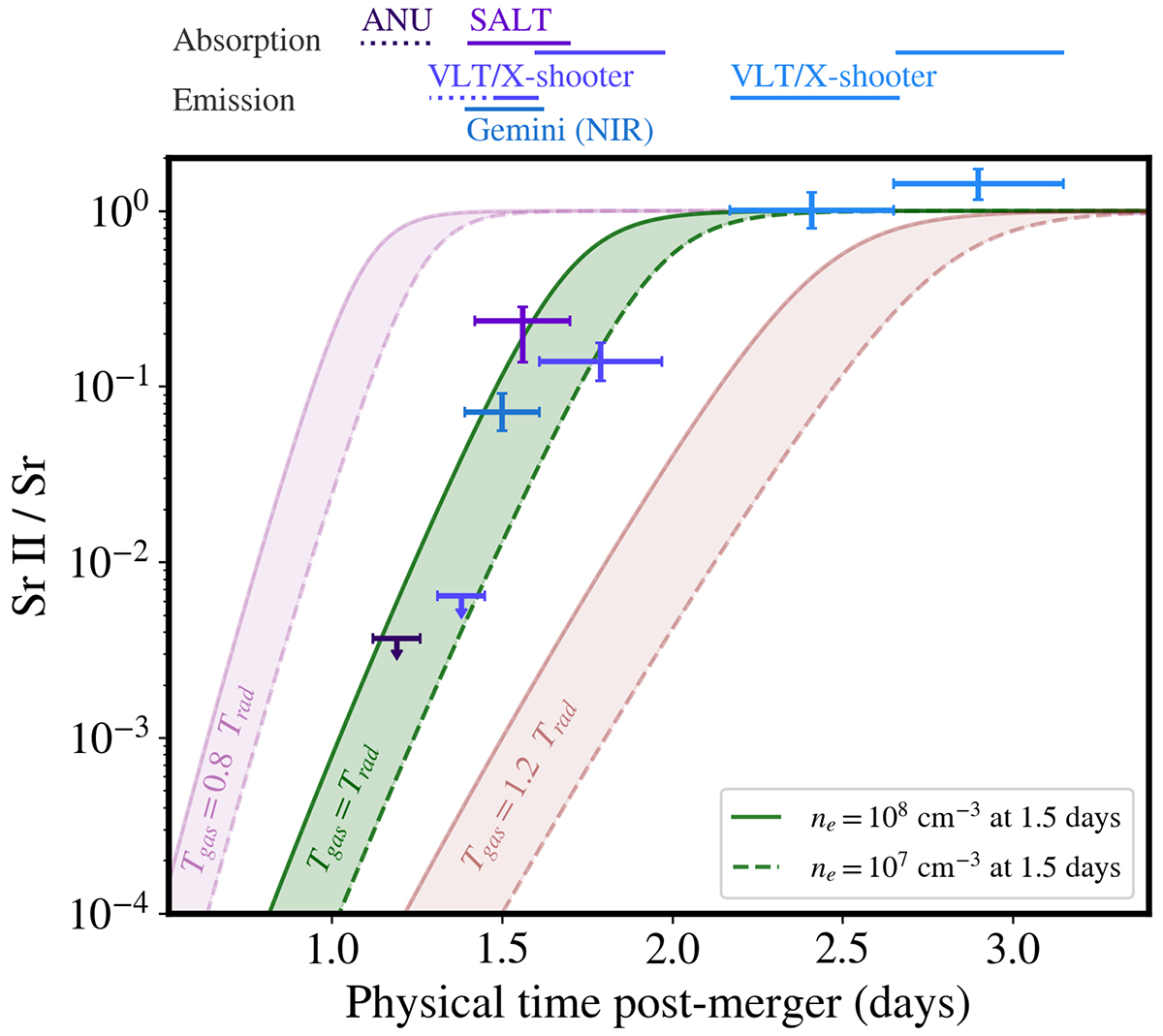Fig. 7.

Download original image
Fraction of Sr II under LTE conditions as a function of time post-merger. On the upper x-axis, we illustrate the physical time of scattering probed by the 1 μm feature in absorption and emission by the various spectra from ANU, SALT, VLT/X-shooter, and Gemini FLAMINGOS-2. The dotted lines indicate that no feature has clearly emerged (prior to ∼1.4 days in both emission and absorption). We indicate the required fraction of Sr II needed to produce the optical depths observed in each spectrum (assuming MSr = 6 × 10−6 M⊙ homogeneously distributed across 0.2c < v < 0.4c; see main text). The ANU (X-shooter) and SALT (Gemini) spectra indicate a rapid transition in absorption (emission) from an optically thin to optically thick regime around 1.3–1.5 days. For the feature to emerge around 1.4 days post-merger, the ionisation temperature is required to be nearly identical to the radiation temperature inferred from the blackbody emission. For the feature to emerge at near-contemporaneous physical time in the polar and equatorial ejecta, a near-isotropic temperature is required.
Current usage metrics show cumulative count of Article Views (full-text article views including HTML views, PDF and ePub downloads, according to the available data) and Abstracts Views on Vision4Press platform.
Data correspond to usage on the plateform after 2015. The current usage metrics is available 48-96 hours after online publication and is updated daily on week days.
Initial download of the metrics may take a while.


